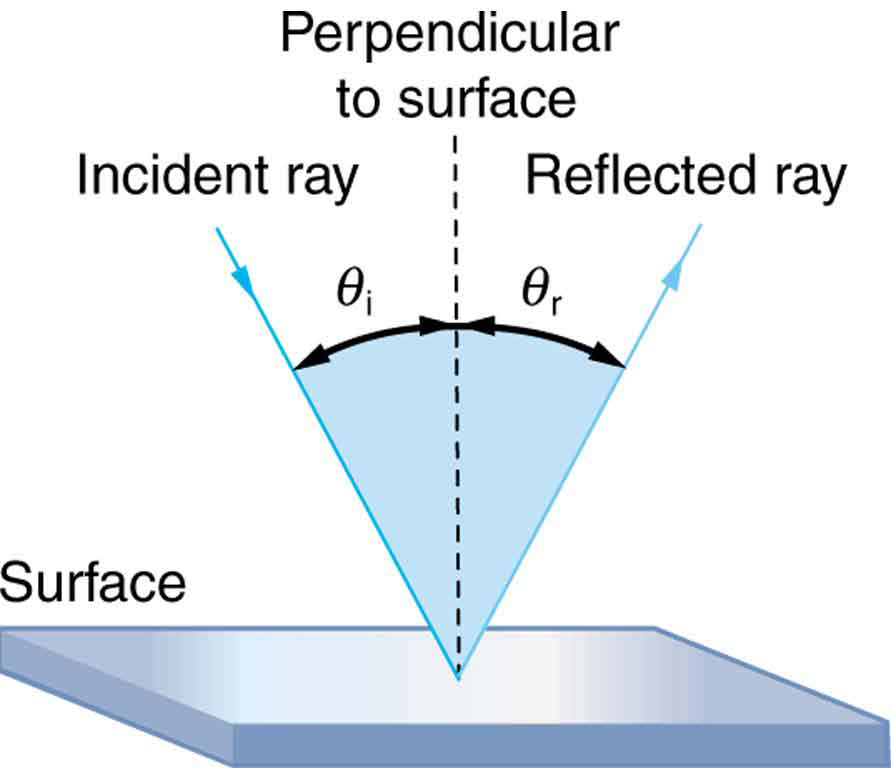When a ray of light is falling on any object either it is shiny, smooth, or polished, the light from that object bounces back these light rays into the eyes, and this is known as a reflection of light. This is the most important phenomenon as it allows us to look around the world. For example, the twinkling of light or stars is reflected by a mirror.

Laws of Reflection

In the diagram, shown above, the light ray that is approaching the mirror is known as the incident ray. While the ray that is leaving the mirror is known as the reflected ray. At the point of incidence, the incident ray is striking the mirror in the perpendicular drawn line and is known as normal. The normal causes the division of reflected ray and incident ray in the equal portions and gives the angle of incidence, and angle of reflection. By using this information, the law of reflection can be stated which says that the angle of incidence and angle of reflection are equal, and the normal ray, reflected ray, and a ray of incidence are all lying in the same plane.
Types of Reflection
Two types of reflection are regular reflection and irregular reflection. The regular reflection is also known as the specular reflection and irregular reflection is also known as diffused reflection. The regular reflection is a mirror-like reflection of light rays. In this type of reflection, the light rays that are reflected from shiny and smooth objects like that of the mirror are reflected at the definitive angle and each of the incident ray that is reflected along the reflected ray as has an angle to normal, just like the angle of the incident ray. So, this type of phenomenon causes the formation of images.
Whereas, the irregular or diffused, a type of reflection is non-mirror like reflection. In this type of reflection, the light rays that hit the irregular object having the rough surfaces are reflected, and they are scattered in all the directions. In such kind of reflection, the incident ray that is reflected along the reflected ray is not having the same angle to the normal, like that of the incident ray. By this type of reflection, there is no formation of images.
Scattering of Light
Some part of the light is scattered in all the directions when it is hitting small particles such as gas molecules, or larger particles such as droplet of water or dust. The amount of scattering is dependent on the wavelength of light and the size of particles. For the smaller wavelengths, more scattering is observed.